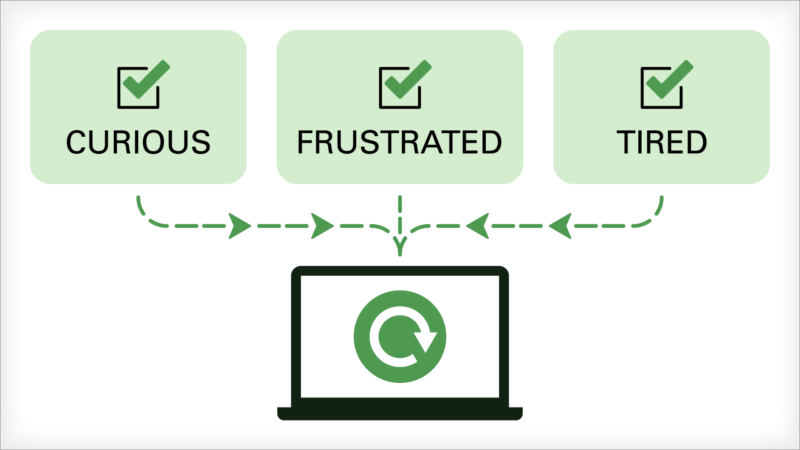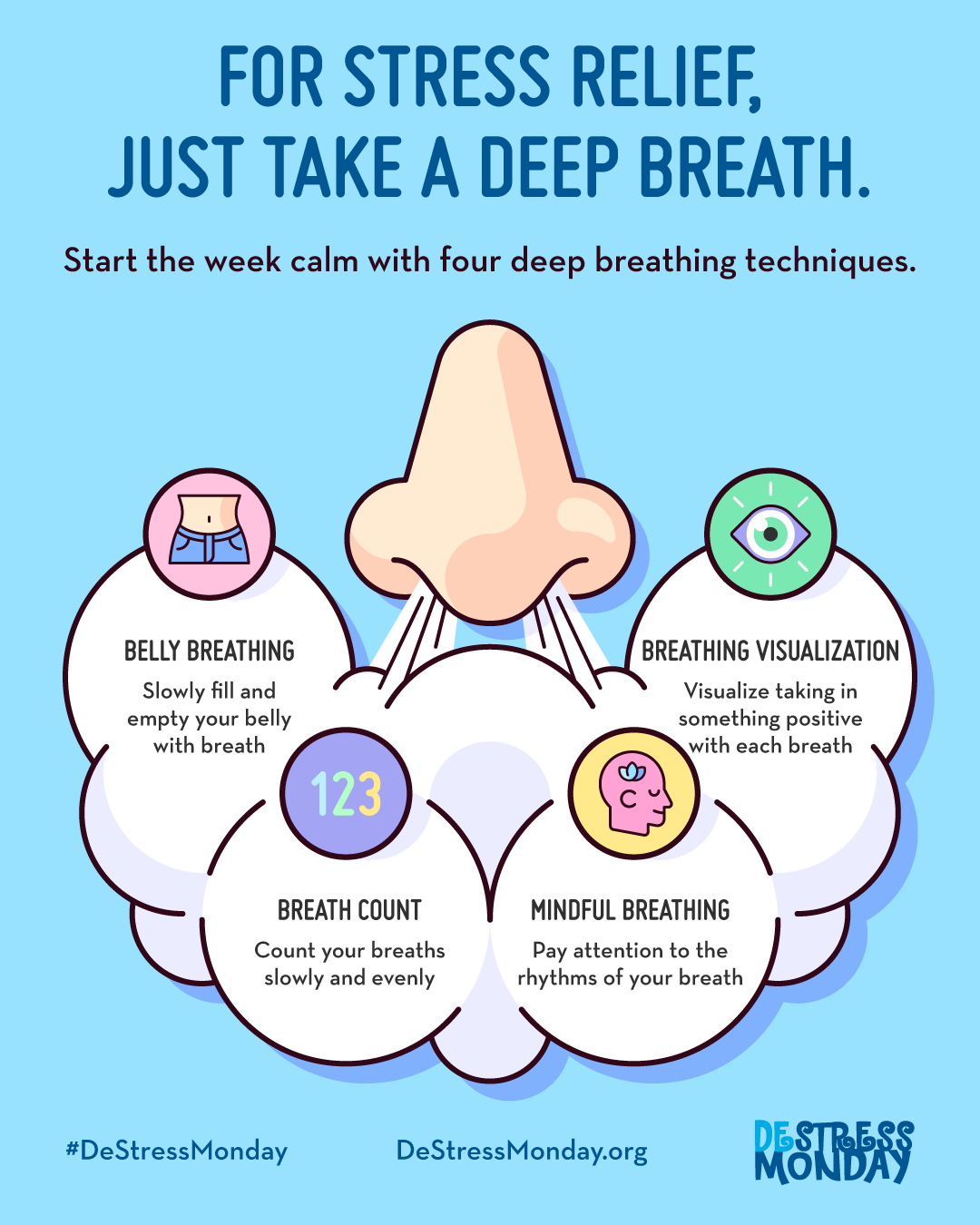Intro to Deep Breathing
Feeling anxious or stressed? Stop for a moment, and take a slow deep breath.
Do you notice a change in how you feel? When you breathe deeply, you’re sending a message to your brain to relax, a message that is then forwarded to the rest of the body. When this signal from the brain is received, the negative symptoms of stress—increased heart rate, rapid breaths, high blood pressure—start to fade and are instead replaced with a sense of calm.
It’s hard to imagine that an action as simple as breathing can have such a dramatic effect on your mood, but techniques for deep breathing (also known as diaphragmatic breathing) have been used in different cultures for centuries as a way to reduce tension of both the body and mind.
How Does Our Breathing Affect Us?
Many of us don’t pay attention to how we breathe; because, well, why would we? For humans, good, normal breathing, or resting respiratory rate, is unlabored and employs only the elastic recoil of the lungs. But it’s common for humans to use less than half their breathing capacity. These short, shallow breaths that originate in the chest, reduce the ability to take in oxygen and expel carbon dioxide and can actually exacerbate feelings of anxiety. This type of breathing has also been linked to degenerative disease, poor quality of life, and an early onset of death.
Deep-Breathing Techniques
Hundreds of varied deep-breathing techniques have been developed over the centuries, but many of them are centered on the concept of breath control. Since the rhythm of a person’s breathing is so intertwined with their current emotional state, an individual can more effectively manage their feelings by consciously managing the pace of their breath.
DeStress Monday focuses on four different deep-breathing practices, all of which are designed to improve focus, strengthen mental clarity, and dispel negative thoughts and feelings.
Belly Breathing
Belly breathing, or breathing deep into the lower lungs so the belly expands, allows the intake of more oxygen. This “full oxygen exchange” slows blood pressure and the heart rate, producing a calming effect for the whole body. To make sure you’re breathing deeply, visualize your whole torso taking in air like an inflating balloon, through your nose, down into your chest, all the way down to your belly.
Breath Counting
Breath counting is an ancient concentration technique that improves focus and mental clarity through controlled breathing. Regulating the pace of breathing helps dispels distracting or painful thoughts and replaces them with a sense of calm and tranquility.
Mindful Breathing
Mindful breathing is a simple, yet powerful, meditation practice that draws focus to the rhythm and flow of the breath. By anchoring concentration to each inhale and exhale, a practitioner of mindful breathing can redirect their attention away from negative thoughts or feelings back towards the soothing pattern of breathing.
Breathing Visualization
Breathing visualization, often referred to as visualization meditation, is a basic wellness practice that involves using mental imagery, pictures, or affirmations, to calm your body and mind and help regulate your breathing.


Refresh Every Monday with Our Check-Up Tool
Our interactive Healthy Monday Refresh Check-Up Tool is designed to help you assess how you’re feeling every Monday and see options for actions you can take to move toward you wellness goals.
